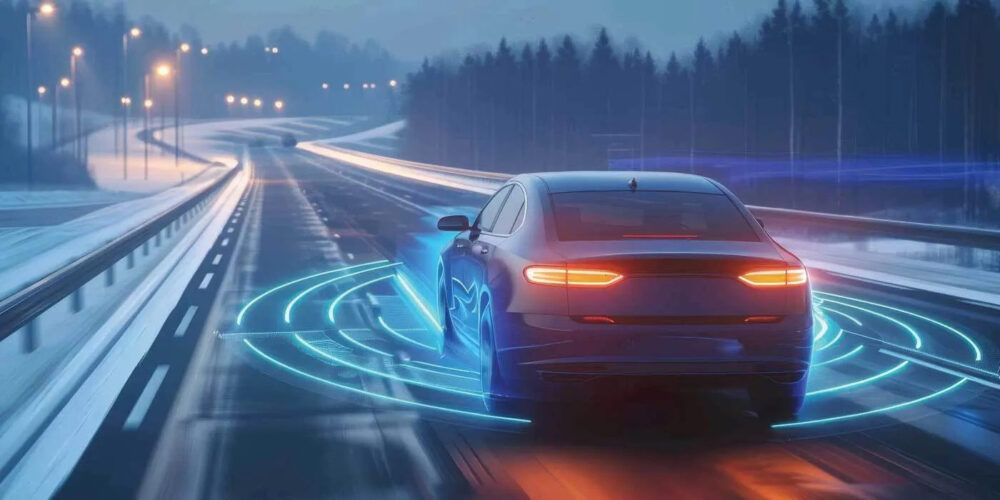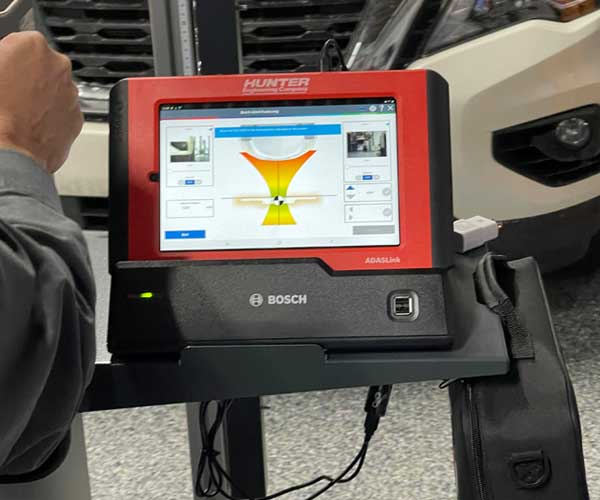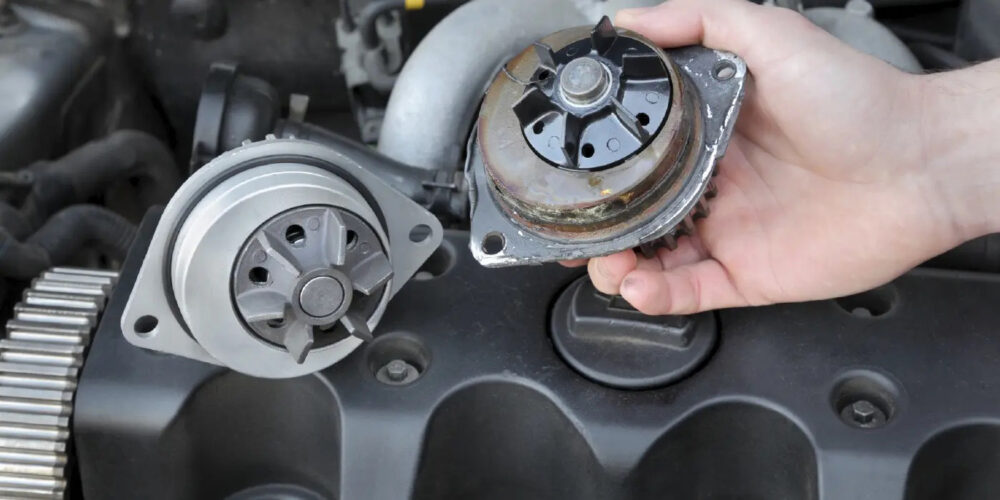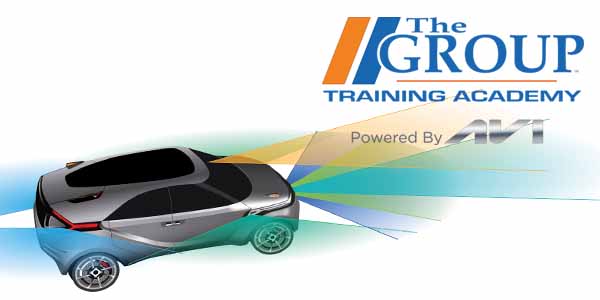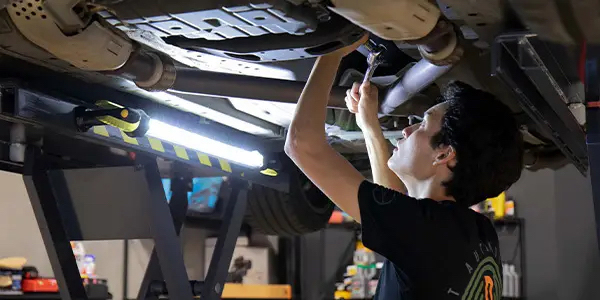Automotive technology is funny. It always seems so new when we’re forced to catch up with it and weave it into our everyday routine. Then we find out it’s been around much longer than we realize. We didn’t worry about it until suddenly, some form of it was on almost every vehicle on the road.
Advanced Driver Assistance Systems (ADAS), is one of those technologies, and like it or not, it’s time to jump on the ADAS bandwagon. Luckily, because it’s not as new as it seems, the tool and equipment technology to help us service these systems is coming of age. In other words, we’re no longer fighting through the growing pains of it. It’s here. It works, and it works well.
The acronym is the newest part of all of it, and you might be surprised you’re already familiar with some of it. The purpose of ADAS, simply put, is to help drivers operate vehicles on a safer level, and its early roots were the development of antilock braking systems.
Of course, today it’s much more complex with systems like blind spot monitoring, adaptive cruise control and automatic emergency braking, but nonetheless it’s all there for the same reason. ADAS are categorized into levels, determined by the amount of automation for any given system. Understanding them not only helps explain certain aspects to your customer, but it can help you as a technician to understand the various aspects and need for calibration.
Level 0: No Driving
Automation
These systems don’t control the vehicle in any way, they only provide information or situational assistance to the driver. Examples are blind spot warnings, forward collision warnings, lane departure warnings and antilock braking systems.
Level 1: Driver
Assistance
These systems have the ability to control a single function of the vehicle, for example, adaptive cruise control and lane keep assist, but the driver is responsible for the main task of driving and braking, and these systems can be switched off by the driver.
Level 2: Partial
Driving Automation
At this level, ADAS can control multiple functions, for example lane keep assist and adaptive cruise control, which employs both lateral and longitudinal control at the same time. The vehicle is able to perform both functions on its own, but with the intent that the driver is monitoring them at all times. The driver must touch the steering wheel at regular intervals, so the system recognizes it is being monitored. Level 2 ADAS allows for temporary “hands free” driving, and this is the highest level legal for vehicles in the U.S.
Level 3: Conditional Driving Automation
These systems can control most of the functions of a car, and the vehicle can temporarily take over the task of driving, without regular monitoring from the driver. The driver must be able to take over control and respond to warnings from the system. There are currently no vehicles in the U.S. that are available at this level.
Level 4: High Driving Automation
Level four is defined as complete autonomy under certain conditions. The driver is no longer required to be ready to intervene at any time and could for example, even sleep with level 4 ADAS. This level is, however, linked to very specific conditions such as driving on a defined route or in a parking garage.
Level 5: Full Driving Automation
These vehicles will have the ability to drive anywhere, under any conditions with no input from a “driver.” These vehicles would not require a steering wheel, or for that matter, an accelerator or brake pedal. In these vehicles, we are no longer drivers. We are just passengers.
Coming of Age
The apprehension of ADAS repair can be compared to any new technology where we “fight” with the equipment available to us as it catches up with the technology. For ADAS, the equipment has come of age. It’s no longer a dealer-only proposition.
Technicians and independent shops can own the necessary equipment to successfully repair and calibrate ADAS systems. The scan tool technology and software is well-refined for ADAS diagnosis and repair, just as it is for all other vehicle systems. Equipment and tool manufacturers have been focused on making this repair technology viable for independent shops, and they’ve succeeded in their efforts.
The calibration area and required space that seemed as if it would be the biggest factor affecting small shops, is now hardly a factor with lifts that are designed to maximize the functionality of individual bays, and scan tool technology that has advanced to maximize the use of limited space whenever possible.
ADAS Servicing
When it comes to servicing ADAS, the most important concept to remember is that ADAS cameras and radar sensors do not have moving parts inside. Cameras are set at the factory for focus and field of view. Radar sensors have a very specific beam pattern that can’t be changed.
A calibration procedure typically uses a target with a specific pattern, shape or even thickness. The target is set at a specific distance, angle and orientation from a measured point on the vehicle. The vehicle knows what the target or fixture should look or sound like because it was programmed into the system at the factory. The scan tool activates this “memory,” so it can compare and possibly adjust.
The majority of forward-facing cameras can’t mechanically change their point of view. The focus and field of view are set at the factory, and there are typically no moving parts. For example, no motors are moving the zoom or the angle of the camera. Instead, corrections are made with software that can “crop” in on the correct field of view and the vehicle’s centerline.
Think of the camera lens as a wide-angle, but the software uses it as a telephoto.
The same is true for blind-spot and rearview cameras. So, when you are calibrating the camera system, you are calibrating what area of the image the camera pays attention to. This prevents a roadside sign or a car in the next lane from becoming classified as an obstacle.
Radar sensors emit radio waves that bounce off of objects and are received by the sensor. These types of sensors can detect objects and vehicles no matter the lighting conditions.
There are two types of radar: long-range and mid-range. Long-range sensors are used to measure the presence, distance and even speed in a narrow field of view. This type of radar is called millimeter-wave radar by some manufacturers.
Long-range sensors can measure up to 600 feet in front of the vehicle.
Mid-range can detect objects 200 feet from the vehicle. But mid-range radar sensors only measure objects that are in near proximity to the vehicle. These radar sensors can be used for blind spot and cross-traffic detection.
Calibration of radar sensors typically involves adjusting their position. Long-range sensors generally are mounted above or below the front bumper. Mid-range sensors can be mounted behind bumper covers, roof pillars and the corners of the vehicle.
The position of a long-range radar sensor can be moved using adjustment screws behind the sensor to adjust direction and elevation. This type of adjustment is typically required if the sensor has been replaced or disturbed.
Ultrasonic sensors have been on vehicles for more than 20 years. These are the small, round sensors mounted in the rear or front bumper of some vehicles. Ultrasonic sensors can detect objects that are typically within 10 feet from the vehicle. They send out soundwaves of a specific frequency that bounce off objects. The greater the return, the closer the object. These are very simple sensors that are used in backup monitor systems and blind-spot detection. Ultrasonic sensors have a very wide angle of detection and low resolution. As a result, ultrasonic sensors don’t need calibration on most vehicles.
The ADAS module assumes that the target is positioned correctly when the scan tool initiates the calibration mode. The system trusts that you took the time to set up the targets with some degree of accuracy. It compares the factory settings to the actual values. It uses this information to make adjustments. If the required adjustment is outside of the parameters, a mechanical adjustment to the sensor will then have to be made to the mount or adjusters, if you are lucky.
When you set up a target or fixture for a camera or radar calibration, the position and distance from the vehicle is critical to the performance and operation of the system. If the target or fixture is even a few millimeters off in position, it can severely affect system operation, as the camera or radar can end up “looking” at the wrong spot by many feet or meters.
As with any technology, servicing it is half equipment and half experience. The equipment is here. The experience starts when you do.

